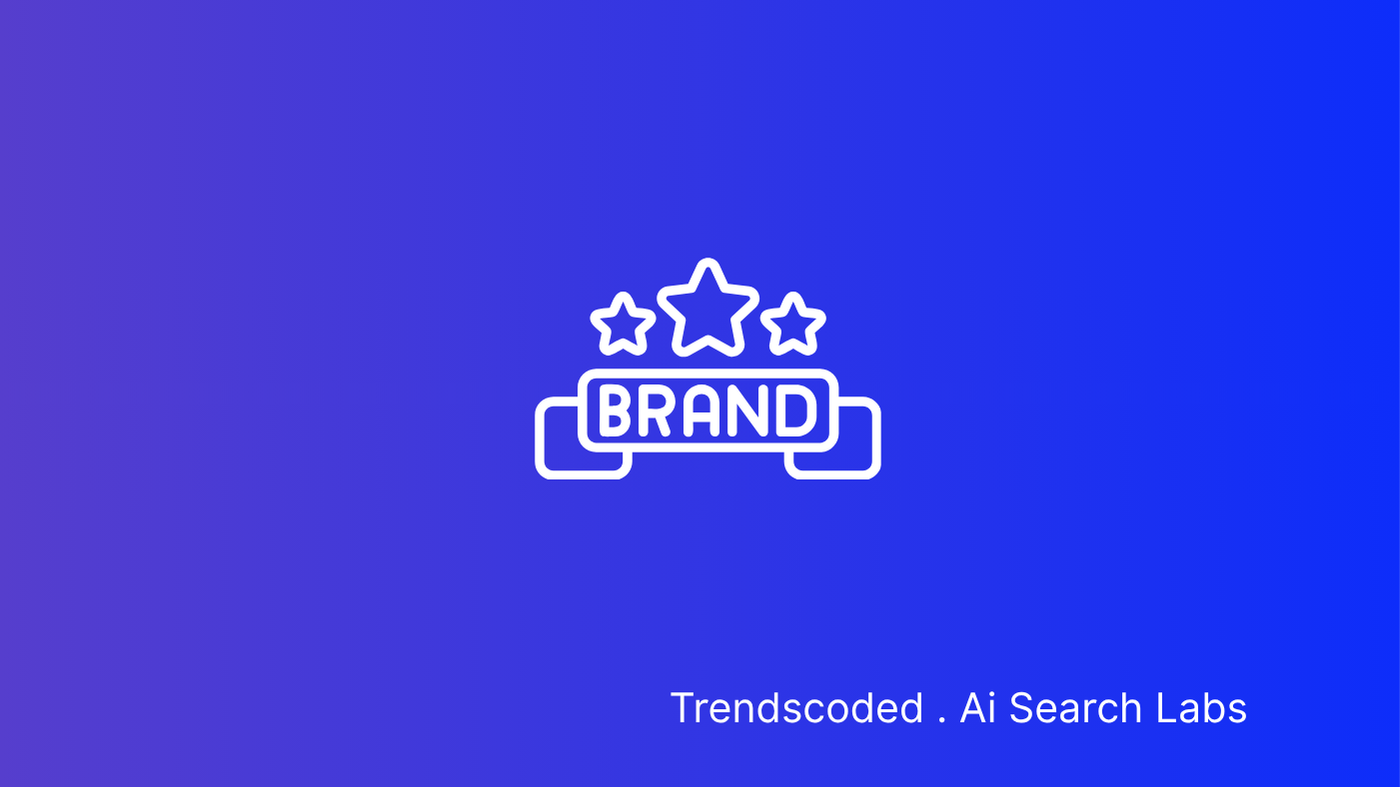TL;DR: In branded search, the win is simple: get mentioned and cited inside AI answers (Google AI Overviews/AI Mode, ChatGPT, Perplexity, Gemini). Your biggest levers: brand web mentions, brand-rich anchors, clean entities, and cite-ready content. Paid helps demand and defense, but it’s a weak direct driver of citations.
What Is Branded Search?
Any query that names your company, product, or trademark. Think “Figma pricing” or “HubSpot CRM.” These searches carry intent. People already know you.
Why It’s Different Now
We don’t just fight for blue links anymore. AI systems read, decide, and speak. If your brand is in the answer, you win attention—even when clicks are down.
The Seven Branded Query Types
- Pure Brand — “Canva.” Navigational. Own the basics.
- Brand + Product — “Salesforce CRM.” Tie to crisp product pages.
- Brand + Qualifier — “Shopify pricing.” Publish clear answers and schema.
- Brand vs. Competitor — “Rivian vs Tesla.” Use neutral, sourced comparison blocks.
- Brand + Motivator — “Calm app to reduce anxiety.” Map use case → outcome → proof.
- Brand + Persona — “Notion for startups.” Speak the role’s workflow.
- Brand + Persona + Motivator — “Notion for startups to standardize docs.” Best conversion. Highest context.
The AI Visibility Ladder
- Mentions — your name appears in the answer.
- Co-mentions — your name sits with the right peers.
- Citations — your page is linked or quoted. That’s authority.
Climb in order. Mentions build familiarity. Co-mentions place you. Citations seal trust.
What Actually Drives Visibility
- Brand web mentions. Earn coverage in media, communities, and reviews. Repeat it often.
- Brand-rich anchors. Ask publishers to link with your brand name, not “click here.”
- Entity clarity & cite-ready pages. Consistent names/IDs, clean HTML, and extractable facts: pricing, specs, SLAs, security, comparisons, references.
- Branded demand. Launches and partnerships that lift searches for your name.
- Paid (indirect). Use it to spark coverage and demand—not to “buy” citations.
A Small, Clear Comparison
| Lens | Traditional (SEO/SEM) | AI Answers (AEO/GEO/LLMO) |
|---|---|---|
| Goal | Rank and capture clicks | Be mentioned and cited in answers |
| Signals | On-page relevance, backlinks | Web mentions, brand anchors, entity clarity |
| Content | Longform and landing pages | Chunkable facts, FAQs, specs, comparisons |
| Off-site | Links and reviews | PR, media, communities for mentions/co-mentions |
| Paid | Coverage/CPC efficiency | Indirect — fuel demand and PR |
| Evidence | Feature lists; light sourcing | Decision tables with third-party sources and outcomes |
Practical Playbook
- Ship a canonical entity map. Brand, products, features, persona types, motivators. Lock names and IDs. Mirror in schema.
- Lead with a definition. One sentence at the top that matches your canonical brand string.
- Publish extractable blocks. FAQs, pricing, specs, SLAs, security notes, comparisons. Short. Quotable.
- Make comparisons “citation-ready.” Neutral tone, clear criteria, third-party sources, methods, outcomes.
- Prove it. Logos, quotes, metrics—right next to the claim.
- Keep copy semantic. H2/H3s, clean paragraphs, minimal JS around critical facts.
- QA for consistency. Names match the map, labels are exact, sources exist, schema validates.
Measurement That Matches Reality
| Stack | KPIs | Common pitfalls |
|---|---|---|
| Rank / Traffic |
|
|
| AI Visibility |
|
|
Bottom Line
Optimize for answers. Earn mentions, engineer co-mentions, and publish cite-ready, entity-clean pages. Map all seven branded query types. Keep it short, sourced, and easy to quote.
FAQ for Branded Ai Search
What actually “counts” as winning branded AI search?"
Being mentioned and cited inside AI answers (Google AI Overviews/AI Mode, ChatGPT, Perplexity, Gemini). Rankings still help, but answer inclusion is the new north star.
How do I get mentioned more often in AI answers?
Earn frequent, high-quality brand web mentions across credible media, communities, and reviews. Use consistent entity naming so models connect those mentions back to you.
What’s the fastest lever for citations, not just mentions?
Publish cite-ready pages: short definitions, fact boxes, comparison tables, pricing/FAQ modules, security/SLA specs—clean HTML blocks that are easy to quote.
Do classic SEO signals still matter?
Yes—crawlability, internal links, topical depth, and authority help AI systems find and trust you. Think of SEO as the amplifier for answer inclusion.
What are the biggest blockers to appearing in AI answers?
Inconsistent entity names, facts hidden in JS/accordions, thin comparisons without sources, and few off-site mentions. These reduce extractability and trust.
How do persona and motivator targeting change branded AI search?
AI answers are contextual. Align content to persona × motivator (who + why) with decision criteria and proof. Context-fit pages earn more stable mentions/citations.
What’s the “AI Visibility Ladder” and how do I use it?
Climb from mentions → co-mentions → citations. Mentions build familiarity, co-mentions establish category fit, and citations signal authority.
Do paid ads increase my chance of being cited?
Indirectly. Paid can generate demand and coverage (reports, launches, events) that earn mentions. It shows a weak direct correlation with citations inside answers.
How should I structure comparison content (Brand vs. X)?
You can use the Trendscoded Factor Engine, or find the right decision criteria to use in side-by-side tables, methods, and sourced claims. Keep language neutral and add outcomes (time-to-value, ramp time, SLA).
We’re strong on PR but weak on docs. What’s missing?
PR drives mentions; docs drive citations. Add product specs, FAQs, SLAs, security pages, and comparison tables to become quotable.
